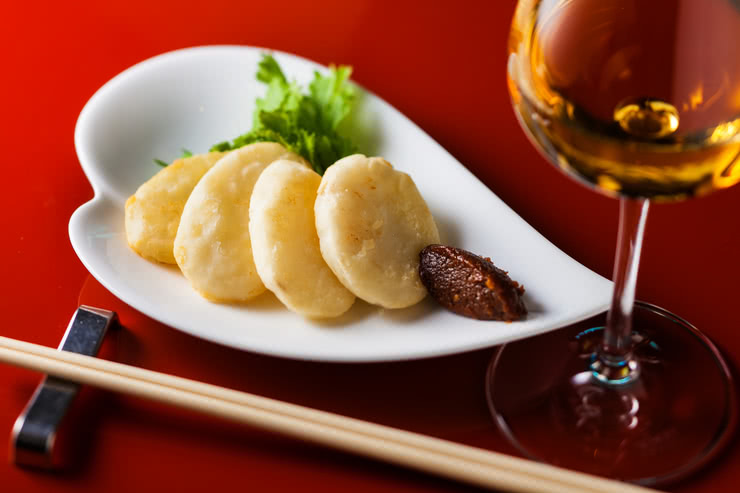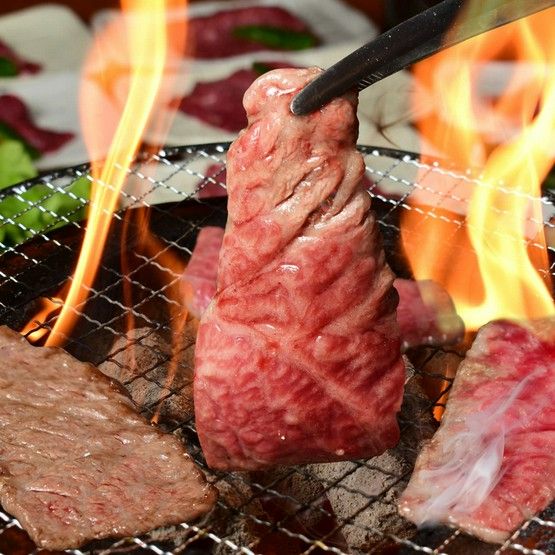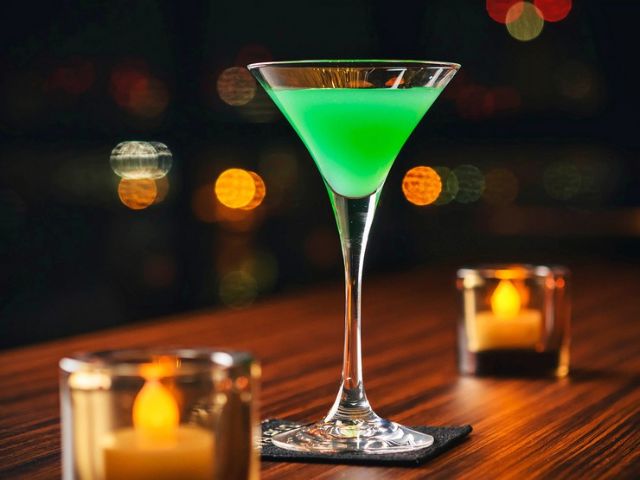일식 사케를 알아보자! 맛있는 사케를 제공하는 도쿄의 레스토랑과 바
최종 수정: 2024년3월30일
작성자:

What's Sake?

A defining characteristic of sake is its complex categorization based on the ingredients used, rice polishing/milling ratio, and brewing method. In Japan, each sake brewery guards its own secret recipe that has been handed down through several generations. The chief brewers are called the "Toji", and the other skilled brewers are called the "Kurabito." The road to becoming a Toji is difficult, and one has to hold the Grade 1 CSP (Certified Sake Professional) certification to even be considered. Sake made by the most skillful technicians are said to characterize Japan itself, filled with a painstakingly crafted, delicate flavor.
Types of Sake
Ginjo Sake
Daiginjo Sake
Junmai Sake
Honjozo Sake
Namazake
The Taste of Sake
1. MYSH Sake Bar (Shibuya)


MYSH sake bar
Closed: None
Average price: [Dinner] 5,000 JPY / [Lunch] 1,000 JPY
Access: 5 minutes walk from the exit No.13 of Shibuya Station
Address: 2F, New Art Bldg., 5-30-3, Jingumae, Shibuya-ku, Tokyo
2. Minami Aoyama Hifumi (Gaiemmae)


Minami Aoyama Hifumi
Closed: None
Average price: [Dinner] 6,000 JPY / [Lunch] 1,000 JPY
Access: A three-minute walk from Gaienmae Station. Take Exit 1a, turn left at Francfranc, and you will come across the restaurant while walking down the hill.
Address: B1F Cattleya Building, 3-2-3 Minamiaoyama, Minato-ku, Tokyo (Map)
More Details Reservation
3. Washubar Kuri (Ginza)


Washubar Kuri
Closed: None
Average price: [Dinner] 4,000 JPY
Access: Five minute walk from Tokyo Metro Ginza Line, Hibiya Line & Marunouchi Line Ginza Station
Address: 2F Toni Bldg., 6-4-15 Ginza , Chuo-ku, Tokyo (Map)
More Details
4. Shusaron (Shinagawa)


Shusaron
[Saturday, Sunday, public holiday, day before public holiday] normally 15:00 to 00:00 (last order 23:30) last order for food 23:00
Closed: None
Average price: [Dinner] 4,000 JPY
Access: Three minute walk from JR Keihin Tohoku Line, Tokaido Line, Yamanote Line, Yokosuka Line & Keihin rapid Line Shinagawa Station
Address: Keikyu Shopping Plaza Wing Takanawa WEST 2F, 4-10-18 Takanawa , Minato-ku, Tokyo
5. Sake no Daimasu Kaminarimon Branch (Asakusa)


Sake no Daimasu Kaminarimon Branch
[Saturday, Sunday, National Holidays] 12:00 pm - 11:30 pm
Closed: Tuesday
Average price: [Dinner] 2,000 JPY / [Lunch] 1,000 JPY
Access: A 30 second walk off the side of the back of Kaminari-mon. Take the side street next to the police box, then take the first right after that and you should see it.
Address: 1-2-8 Asakusa, Taito-ku, Tokyo
6. Meishu Center Ochanomizu branch (Ochanomizu)


Meishu Center Ochanomizu branch
[Sunday] 12:00 pm - 7:00 pm (Food L.O. 6:00 pm, Drink L.O. 6:45 pm)
Closed: Monday
Average price: [Dinner] 3,000 JPY / [Lunch] 1,000 JPY
Access: 5 minutes walk from JR [Ochanomizu Station] / 5 minutes walk from [Tokyo Metro Ochanomizu Station] / 10 minutes walk from JR [Akihabara Station]
Address: 1F, Lions Plaza Ochanomizu, 1-2-12 Yushima, Bunkyo-ku, Tokyo
7. Nurukan Sato Ginza Branch (Ginza)


Nurukan Sato Ginza Branch
[Friday, Day Before National Holiday] 5:00 pm - 4:00 am (L.O. 3:00 am)
Closed: Sunday
Average price: 7,000 JPY
Address: 8-2, Ginza, Chuo-ku, Tokyo
면책 조항: 모든 정보는 게재 시점의 내용입니다.
끝까지 읽어주셔서 감사합니다.
SAVOR JAPAN은 여러분의 일본 맛집 여행을 더욱 특별하게 만들어 드리기 위해 최고의 맛집 찾기를 도와드립니다.SAVOR JAPAN에서는
도쿄주변에서 여러분께 꼭 맞는 맛집을 검색하고 예약하실 수 있습니다
지역별로 레스토랑을 더 찾아보세요.
키워드
최종 수정: 2024년3월30일
작성자:
관련 기사
최신 기사
카테고리
요리
아카이브
- 2025년6월(15)
- 2025년5월(34)
- 2025년4월(43)
- 2025년3월(28)
- 2025년2월(36)
- 2025년1월(24)
- 2024년12월(65)
- 2024년11월(82)
- 2024년10월(13)
- 2024년9월(62)
- 2024년8월(62)
- 2024년7월(113)
- 2024년6월(78)
- 2024년5월(63)
- 2024년4월(3)
- 2024년3월(595)
- 2024년2월(15)
- 2024년1월(9)
- 2023년12월(5)
- 2023년10월(5)
- 2023년8월(4)
- 2023년7월(5)
- 2023년6월(9)
- 2023년5월(1)
- 2020년8월(1)
- 2020년7월(1)
- 2020년6월(1)
- 2020년5월(1)
- 2020년4월(1)
- 2020년3월(2)
- 2020년2월(1)
- 2020년1월(2)
- 2019년12월(4)
- 2019년10월(1)
키워드
- 가이드
- 가이세키 요리
- 가족여행
- 게
- 겨울
- 관광
- 교토
- 꼬치 튀김
- 나리타 공항
- 나베 요리(전골)
- 다국어 메뉴
- 데이트
- 도쿄
- 돈부리(덮밥)
- 라멘
- 랭킹
- 레시피
- 마쓰자카규
- 매너
- 매운 요리
- 먹는 방법
- 면류
- 명물요리
- 모츠나베 (곱창전골)
- 몬자야키
- 무한리필
- 문화
- 미쉐린
- 미즈타키
- 벚꽃
- 봄
- 불꽃놀이
- 비어가든
- 사시미(생선회)
- 사케(일본술)
- 새해
- 샤브샤브
- 성게
- 성지
- 세계유산
- 세토우치
- 소바(메밀국수)
- 스시(초밥)
- 스테이크
- 아침 식사
- 애니메이션
- 야키니쿠(고기집)
- 엑스포
- 여름
- 역근처
- 영어 가능
- 오모테나시
- 오사카
- 온천
- 와규
- 요쇼쿠(양식)
- 위생적인
- 위스키
- 유명 레스토랑
- 유명한관광장소주변
- 유바(두부껍질)
- 이벤트
- 이자카야
- 이탈리아요리
- 인기 미식 사이트 추천
- 일본술(사케)
- 일식
- 장어
- 저렴한 가격
- 점심
- 접근성
- 조미료
- 중식
- 징기스칸
- 철판구이
- 초여름
- 추천 코스
- 축제
- 카운터석
- 캇포 요리
- 쿠시카츠
- 테이크아웃
- 편리한장소
- 포토존
- 프랑스식
- 향토 요리
- 혼밥족 환영
- 훌륭한 경치
지역별로 맛집 찾기
-

도쿄
일본 최대 도시인 도쿄는 일본 요리 문화의 중심입니다.<br> 수많은 도쿄의 레스토랑에서 상상할 수 있는 모든 종류의 음식을 제공하고 있으며<br>도요스 어시장은 전국 최상의 생선을 레스토랑에 지속적으로 제공하고 있습니다.
-

도쿄 근교
도쿄 주변의 해안 지역, 산악 및 계곡에는 다양한 온천, 스키장과 같은 관광 명소가 즐비하며, 현지에서만 맛볼 수 있는 고유한 음식도 즐길 수 있습니다.
-

교토 및 오사카 지역
교토 및 오사카는 그 주변 지역과 더불어, 7세기부터 일본의 요리 문화에 큰 영향을 끼쳐왔습니다. 이 지역은 엔터테인먼트, 고베 쇠고기 및 다양한 전통 요리로 유명합니다.
-

홋카이도
홋카이도는 쌀, 육류, 채소, 생선 및 과일과 같은 양질의 다양한 농수산물의 원산지입니다. 홋카이도의 인기 있는 요리로는 로바타야키(꼬치에 끼워 천천히 구운 음식)와 삿포로 미소 라멘이 있습니다.
-

북부 혼슈 (도호쿠)
일본 본도인 혼슈의 북단은 계절 과일 및 채소, 전국 최고의 어획량(특히 오마의 참치)과 요네자와, 센다이 및 야마가타의 맛있는 쇠고기로 유명합니다.
-

중부 혼슈 (주부)
주부는 일본의 본도인 혼슈의 중심에 위치해 있으며, 그 요리 문화는 일본 서부와 동부의 중간에 자리한 만큼 지리적 상황을 반영한 요리 문화입니다. 맛있는 히다 쇠고기, 세계적으로 유명한 후지산과 유명한 사케 양조장이 상당수 주부에 있습니다.
-

서부 혼슈 (주고쿠)
일본 본도의 남서부에 위치한 주고쿠는 다양한 농수산물이 풍부합니다. 돗토리의 마쓰바 게 및 히로시마의 굴을 비롯한 많은 수산물이 일본 최고로 인정받고 있습니다. 배와 뮈스카(백포도주)도 최상품입니다.
-

시코쿠
온화한 기후의 시코쿠는 스다치와 같은 감귤류 재배에 적합한 곳입니다. 또한 시코쿠는 사누키 우동과 에히메 현의 엄청난 대하 수확량 그리고 전국 최고의 호랑이 복어로도 유명합니다.
-

규슈
일본에 서양 문화가 들어온 것은 일본에서 세 번째로 큰 섬 규슈를 통해서였습니다. 규슈의 음식은 포르투갈과 기타 서양 문화의 영향을 받아 다양하고 개성 있는 전통을 갖고 있습니다.
-

오키나와 및 남동부 섬
일본 최남단 오키나와현은 오키나와 소바, 독특한 스시 토핑 및 아와모리 증류주를 비롯하여, 일본 전역에서 인기 있는 오키나와 특유의 요리 및 음료의 보고입니다.





![[2019년 최신판] 도쿄맛집 추천 10곳](https://rimage.savorjapan.com/svj/image/discover_oishii_japan/1220/article_head.jpg?t=1715942161)


~일본의 그루메 사이트 「히토사라」편집장의 편집후기](https://rimage.savorjapan.com/svj/image/discover_oishii_japan/6536/article_head_150x105z.jpg?t=1750244658)